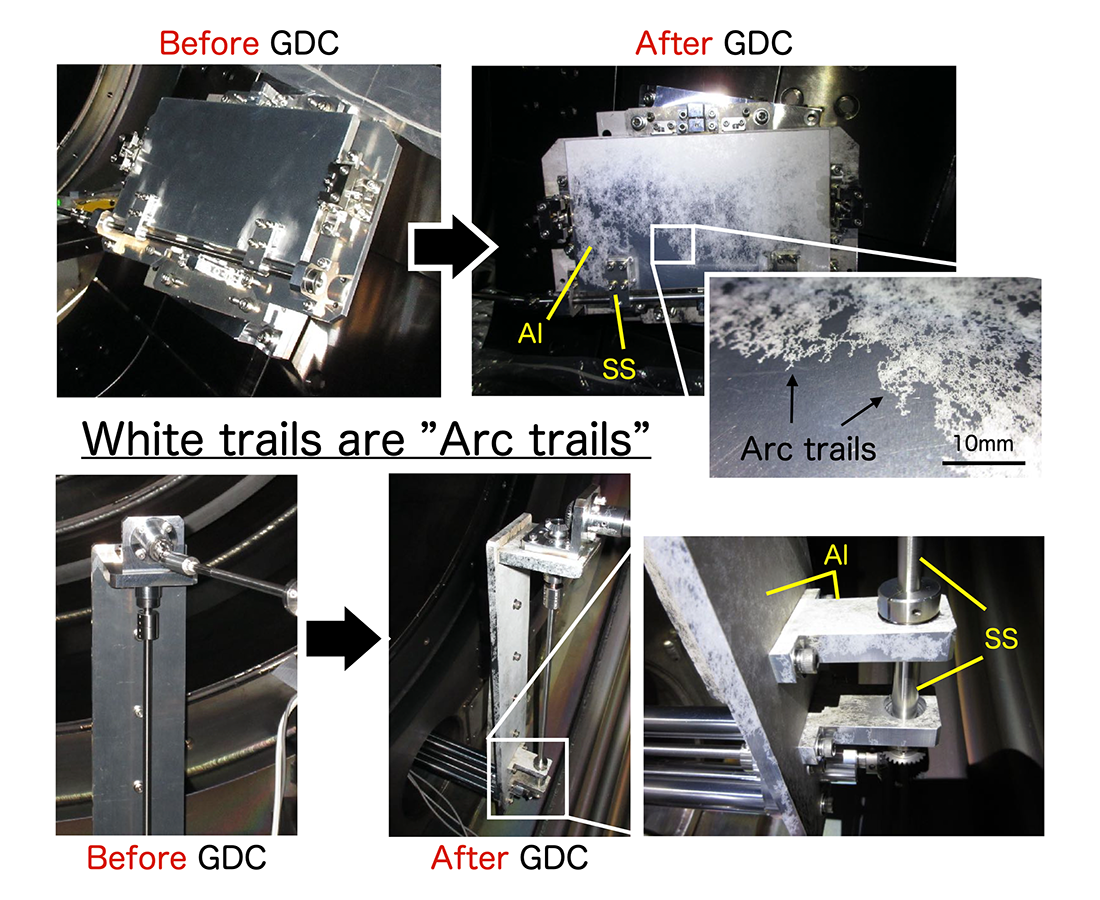Observation of damage on the wall without plasma experiments
Arc trails induced by Glow Discharge Conditioning (GDC) before the plasma experiments was observed on a part of diagnostic installed in LHD. On the other hand, other part of the diagnostic made of different material survived the arcing damage. Current situation of LHD GDC might be on the border that divides the conditions of arcing ignition between different materials. This result contributes to the selection of the material to be installed in LHD in the future.

Arc trails induced by Glow Discharge Conditioning (GDC) before the plasma experiments was observed on a part of diagnostic installed in the Large Helical Device (LHD). However, the other part of the diagnostic made of different materials survived the arcing damage. The current situation of the LHD GDC might be on the border that divides the conditions of arcing ignition between different materials. This result will contribute to the selection of the material to be installed in the LHD in the future.
Arcing is initiated when the specific conditions are fulfilled at the wall in the fusion reactor. Arcing leads to electron emission from the wall. The electric field is formed at the boundary between the plasma and the wall. The electric field is generally weak to initiate the arcing, while the arcing can easily occur at the surface with morphology changes such as large surface roughness and large permittivity due to the oxidization. The wall temperature is enhanced by thermal electron emission after the arcing ignition. When the wall temperature reaches melting point, impurities are released and contamination of core plasma by the impurities degrades fusion reaction.
We observed serious damage due to the arcing on the shutter surface for the diagnostic mirror before the plasma experiment. The position where the arcing was induced can be identified by observing arc trails. Before the plasma experiment, the wall condition of the LHD was improved by GDC. uring the GDC weak plasma was generated over the wall and the arcing occurred. Arc trails due to GDC were also observed in previous studies in the LHD, while most of them were discussed after both the plasma experiment and GDC. Of special note is that the present result is evidence of arcing was initiated only by GDC. Further, the arc trails were observed on the aluminum (Al) surface but not on the stainless steel (SS). The current situation of LHD GDC might be on the border that divides the conditions of arcing ignition between different materials.
The present study discussed the difference in materials. On the other hand, it is necessary to investigate the influence of material properties (work function,thermal conductivity, etc.) and surface conditions (surface roughness, oxide layer, etc.) on the arcing ignition in the future.
The present study was conducted by the research group led by Yuki Hayashi, Suguru Masuzaki, Gen Motojima in NIFS and Dogyun Hwangbo in Tsukuba University.
This research result was published on April 21, 2021 in Plasma and Fusion Research, an online journal by the Japan Society of Plasma Science and Nuclear Fusion Research.
